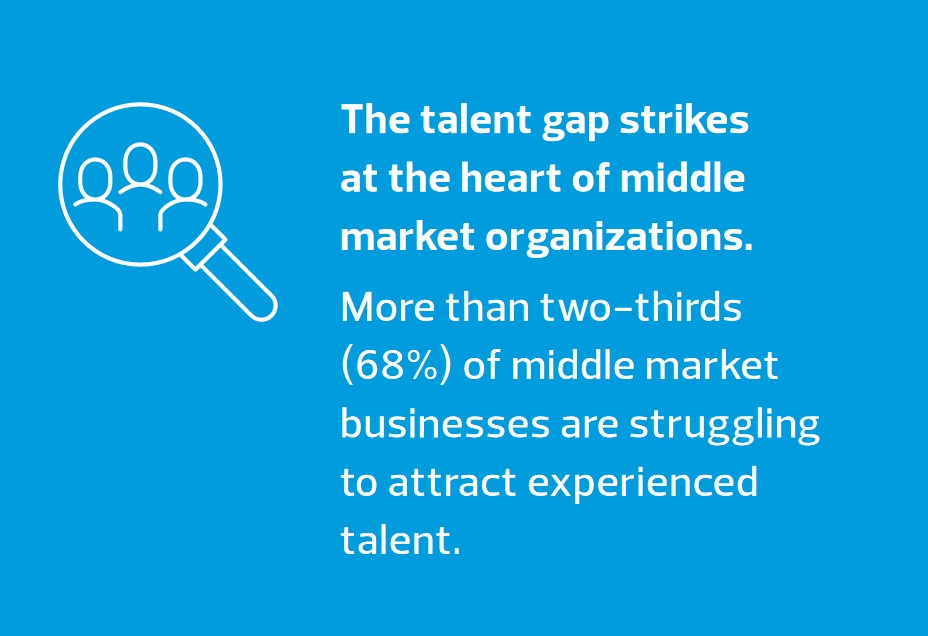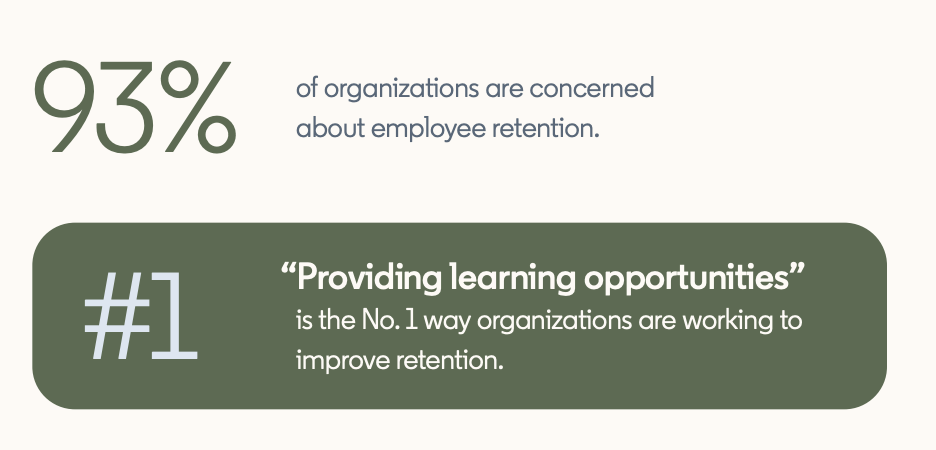The gig economy has experienced tremendous growth in recent years, transforming the way people work and reshaping the labor market. Characterized by short-term contracts and freelance work, this new economic work model has provided individuals with flexibility and autonomy in their professional lives and has also paved the way for the rise of the contingent workforce. At the same time, however, this trend has also created unique challenges for effective worker management. This post will explore six challenges that can arise in the gig economy as well as how to fix them.
6 Worker Management Challenges (and How to Solve Them)
1. Competition for Workers
68% of medium-sized businesses are struggling to find top-tier talent. With more people than ever before opting for freelance work, temporary contracts, and project-based jobs, companies operating within the gig economy are vying for a finite pool of skilled and reliable workers. As competition keeps intensifying, it exerts pressure on employers to offer attractive compensation packages, benefits, and incentives to stand out and secure top-tier talent. In some cases, operational costs can escalate, potentially affecting the profitability and sustainability of gig-based businesses. In addition, the heightened competition can lead to a turnover of workers seeking better opportunities, disrupting workflow continuity and necessitating constant efforts in recruitment and onboarding.

Solution
By establishing a pool of regular workers who commit to consistent projects, employers can enhance operational stability and minimize the disruptions caused by high turnover rates. Doing so promotes familiarity with company processes and values, leading to improved work quality and efficiency.
Reliable core workers are more likely to develop a sense of loyalty and engagement, contributing to a stronger organizational culture. This proactive strategy not only mitigates the constant pressure of recruiting but also offers a more controlled environment for employers to exercise oversight and ensure consistent performance.
2. Filling Shifts in a Timely Manner
Because shift scheduling can make it difficult to ensure a consistent and readily available workforce, employers often struggle to match workers with immediate job openings, leading to operational disruptions, productivity losses, and potential customer dissatisfaction. The rapid pace at which some shifts need to be filled requires efficient coordination and communication, especially when relying on a contingent workforce.
Solution
To address the challenge of filling shifts in a timely manner, have a designated resource where you can find employees when you need them. By proactively building a network of workers who are interested in flexible shifts, employers can tap into this resource whenever urgent staffing needs arise. Creating a streamlined process for these individuals to indicate their availability and preferences can supply the necessary scheduling agility. You may also want to consider implementing predictive analytics to help forecast demand patterns, so you can schedule shifts accordingly.
3. Worker Scheduling
Creating efficient schedules can be a daunting task, especially because the nature of gig work often involves a diverse and decentralized workforce with varying availabilities, preferences, and commitments. Balancing the needs of the business with the flexibility desired by gig workers is a delicate process, since rigid scheduling can deter potential workers seeking autonomy.
Additionally, the ever-changing demand for services in the gig economy necessitates real-time adjustments to schedules, which can be logistically demanding for employers. The absence of direct employer-employee relationships also means that enforcing schedule adherence and managing unexpected gaps in coverage can be challenging.
Solution
Adopting automated scheduling software can help achieve an equilibrium between accommodating the preferences of gig workers and ensuring consistent and effective staffing. Automated scheduling tools can create optimal schedules while accounting for factors like peak demand periods and specific skill requirements.
4. Time Tracking and Visibility
Unlike traditional employment models where employers have direct oversight, gig work often means that individuals operate with more autonomy over their schedules and methods. Consequently, this can lead to difficulties in maintaining consistent quality, adherence to company standards, and ensuring timely completion of tasks.
The absence of real-time monitoring and direct supervision can hinder employers’ ability to track progress, provide immediate feedback, and make necessary adjustments. As a result, maintaining a cohesive work environment becomes complex, potentially impacting efficiency and other business operations.
Solution
To grant workers the flexibility inherent in gig work while establishing mechanisms that foster accountability and maintain the desired level of performance and alignment with the company’s goals, use technology-driven solutions. Digital platforms and tools can facilitate real-time communication, task tracking, and performance monitoring, enabling employers to stay connected and informed in the ever-evolving world of worker management.
5. Worker Engagement and Retention
Employee retention is a source of concern for 93% of companies. With limited direct interactions, worker management in the gig economy makes it challenging to cultivate a cohesive company culture or provide the same level of support and recognition as traditional employment models. This lack of engagement can contribute to lower job satisfaction and ultimately impact worker retention rates. The allure of flexible work arrangements in the gig economy can also tempt workers to continuously explore new opportunities, increasing the likelihood of turnover.
Solution
Addressing these challenges necessitates innovative approaches, such as offering personalized incentives, facilitating open lines of communication, and providing opportunities for skill development and career growth that mirror the benefits offered by traditional employment models. Developing and nurturing employer-employee relationships and offering competitive compensation can also play a pivotal role in enhancing worker engagement and retention.

6. Compliance
Employers who manage gig workers must navigate the complex legal landscape carefully. Misclassification of workers can lead to severe legal consequences, including penalties and lawsuits. Varying regulations across jurisdictions regarding labor rights, benefits, and tax implications further complicate compliance efforts. This means that to ensure both worker flexibility and adherence to legal compliance, employers must remain vigilant in staying updated with constantly evolving regulations.
Solution
If you manage hourly employees, leveraging technology platforms equipped with features like automated contract generation, worker classification checks, and transparent communication channels can help streamline compliance efforts. Not only do these platforms provide real-time updates on changes in labor laws, facilitating prompt adjustments to policies and practices, they also enable you to maintain detailed records of worker interactions, assignments, and compensation that can serve as a protective measure in case of legal disputes.
Navigating the Gig Economy With Nowsta
For organizations that want to leverage the benefits of a flexible employee base while managing the associated risks, effective contingent workforce management is essential.
By proactively addressing the challenges and opportunities that lie ahead, organizations can take advantage of all the benefits the gig economy has to offer and its potential to create a more inclusive, flexible, and dynamic future of work.
With Nowsta, businesses can seamlessly navigate the gig economy and optimize their contingent workforce by streamlining worker management and achieving their goals.
Interested in learning more about how Nowsta can solve your gig economy challenges? Find out today.
